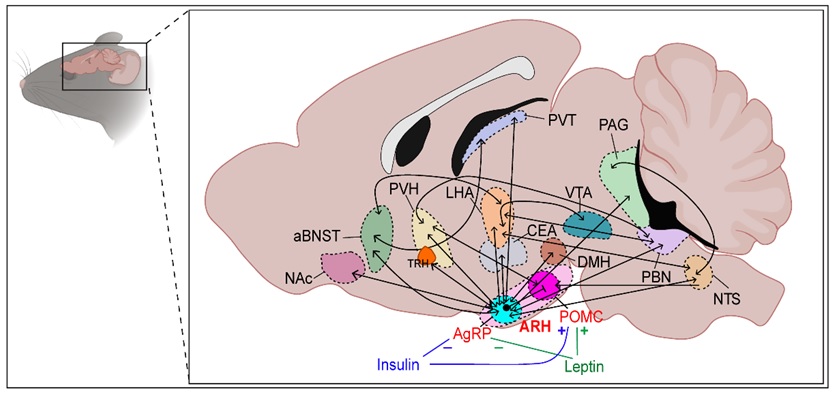Articles
Article Tools
Stats or Metrics
Article
Review Article
Exp Neurobiol 2023; 32(6): 371-386
Published online December 31, 2023
https://doi.org/10.5607/en23040
© The Korean Society for Brain and Neural Sciences
Arcuate Nucleus of the Hypothalamus: Anatomy, Physiology, and Diseases
Juhyun Song1* and Seok-Yong Choi2*
1Department of Anatomy, Chonnam National University Medical School, Hwasun 58128,
2Department of Biomedical Sciences, Chonnam National University Medical School, Hwasun 58128, Korea
Correspondence to: *To whom correspondence should be addressed.
Juhyun Song, TEL: 82-61-379-2706, FAX: 82-61-379-2560
e-mail: juhyunsong@chonnam.ac.kr
Seok-Yong Choi, TEL: 82-61-379-2673, FAX: 82-61-379-2560
e-mail: zebrafish@chonnam.ac.kr
This is an Open Access article distributed under the terms of the Creative Commons Attribution Non-Commercial License (http://creativecommons.org/licenses/by-nc/4.0) which permits unrestricted non-commercial use, distribution, and reproduction in any medium, provided the original work is properly cited.
Abstract
The hypothalamus is part of the diencephalon and has several nuclei, one of which is the arcuate nucleus. The arcuate nucleus of hypothalamus (ARH) consists of neuroendocrine neurons and centrally-projecting neurons. The ARH is the center where the homeostasis of nutrition/metabolism and reproduction are maintained. As such, dysfunction of the ARH can lead to disorders of nutrition/metabolism and reproduction. Here, we review various types of neurons in the ARH and several genetic disorders caused by mutations in the ARH.
Graphical Abstract

Keywords: Arcuate nucleus, Hypothalamus, Metabolic disease, Central nervous system disease, Obesity


